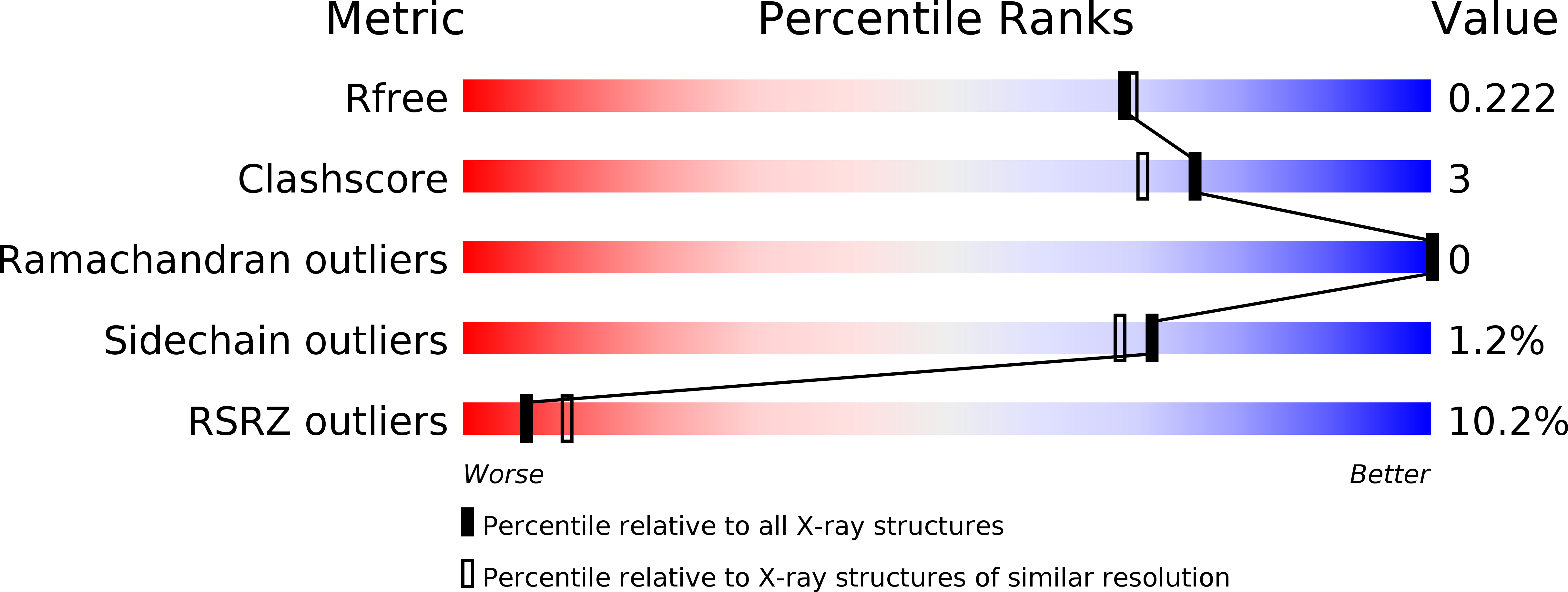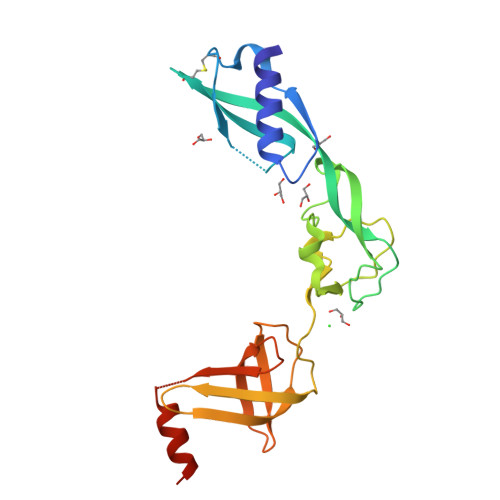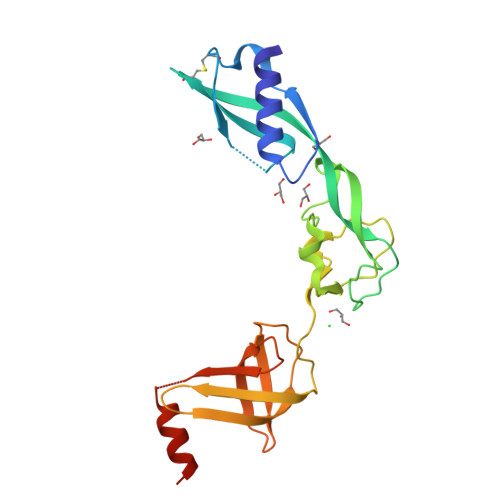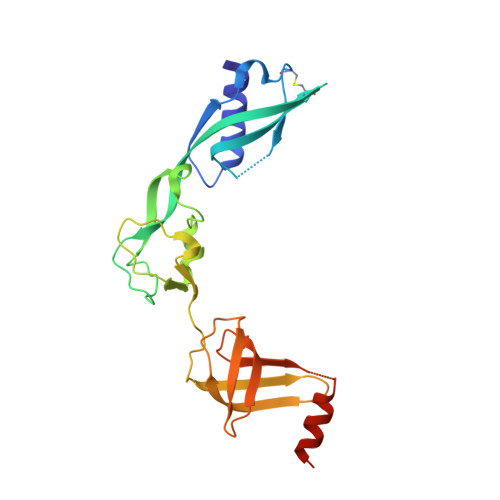Structural flexibility of the periplasmic protein, FlgA, regulates flagellar P-ring assembly in Salmonella enterica
Matsunami, H., Yoon, Y.H., Meshcheryakov, V.A., Namba, K., Samatey, F.A.(2016) Sci Rep 6: 27399-27399
- PubMed: 27273476
- DOI: https://doi.org/10.1038/srep27399
- Primary Citation of Related Structures:
3TEE, 3VJP, 3VKI - PubMed Abstract:
A periplasmic flagellar chaperone protein, FlgA, is required for P-ring assembly in bacterial flagella of taxa such as Salmonella enterica or Escherichia coli. The mechanism of chaperone-mediated P-ring formation is poorly understood. Here we present the open and closed crystal structures of FlgA from Salmonella enterica serovar Typhimurium, grown under different crystallization conditions. An intramolecular disulfide cross-linked form of FlgA caused a dominant negative effect on motility of the wild-type strain. Pull-down experiments support a specific protein-protein interaction between FlgI, the P-ring component protein, and the C-terminal domain of FlgA. Surface plasmon resonance and limited-proteolysis indicate that flexibility of the domain is reduced in the covalently closed form. These results show that the structural flexibility of the C-terminal domain of FlgA, which is related to the structural difference between the two crystal forms, is intrinsically associated with its molecular chaperone function in P-ring assembly.
Organizational Affiliation:
Trans-Membrane Trafficking Unit, Okinawa Institute of Science and Technology Graduate University, 1919-1 Tancha, Onna, Kunigami, Okinawa 904-0495, Japan.


















